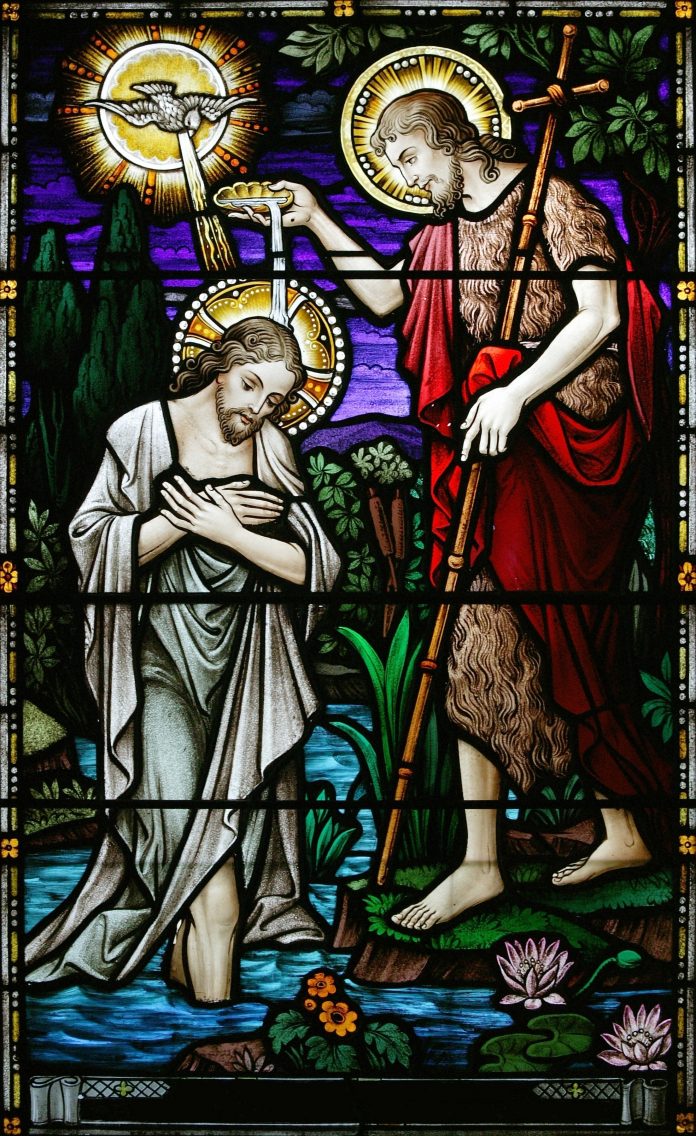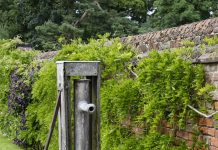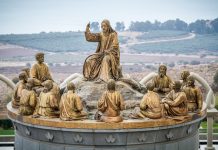
by Alice Pfeifer, CSA
This Complete-A-Project Bible Search activity is for teacher and students (grades 4-6) working together. Use the Bible to answer the questions on the activity sheet [CLICK HERE]. This Bible Search is based on John 2:13-25.
Background
* To understand the feelings of deep reverence that the Jews had for their Temple in Jerusalem, we need to realize the deep reverence they had for God. Jews believed God alone was holy; Isaiah called God “the Holy One.” To be holy was to be “wholly other”—that is, completely different from any other living being. It was to be superior to all others in goodness and power. As such, the Holy One was the sole source of any goodness and power that existed anywhere else in creation. The Jews were God’s holy people because God chose them to be his own. As their part of the covenant with God, they agreed to imitate divine goodness in their own lives and to rely on divine power whenever they faced danger.
* The Temple was a vast multileveled structure surrounded by a wall with gates on all sides. It was made of brilliant white limestone covered in gold plating. Simply to see it was to feel something of the splendor of God.
* At the Temple’s center was a completely dark, completely empty 30-foot-square cubicle called the Holy of Holies. This room could be entered only once a year, on the Day of Atonement, by only the High Priest. God’s presence was thought to be especially strong there.
* The Temple itself became a holy place because, in the words of Father John L. McKenzie, it was “the seat and symbol of the presence of Yahweh among his people.”
* Selling animals for sacrifice on the altar was a routine part of temple life. The practice itself probably did not upset Jesus, but some scholars speculate that the moneychangers were charging too much for their services, which put a burden on the poor. This was what angered Jesus.
* As Catholic Christians, we, too, build houses of prayer where God’s presence can be experienced more strongly than anywhere else. Our Holy of Holies, however, is Christ himself, who is present in several different ways at every Mass. Christ is present in the ordained priest, which is why we rise to greet the priest at the beginning of every Mass. Christ is present in his praying, singing people—which is why everyone’s participation in the praying and singing is so important. Christ is present in the word of God proclaimed during the Liturgy of the Word. Finally, Christ is present in the consecrated bread and wine administered during Communion.
* In today’s Gospel, Jesus makes a prophecy that one day his own body will replace the Jewish Temple. In saying this, some Jewish leaders think Jesus is showing serious disrespect for the seat and symbol of God’s presence. Jesus’ own followers are puzzled by his words. After his Resurrection they understand what he meant.
Answers: 1. Passover, 2. goats, 3. marketplace, 4. my Father’s house, 5. zeal for your house will consume me, 6. a sign, 7. the temple of his body, 8. Jerusalem’s Temple,
9. 46 years, 10. because of the signs he worked
Guide and activity sheet by Alice Pfeifer, CSA. Art by Ansgar Holmberg, CSJ.
MATERIALS
* Copies of the activity sheet [CLICK HERE], one copy for each student
* Bibles (The Search is based on the New American Bible.)
* Pencils or pens
PROCEDURE
1. Have a student read aloud the opening to the story on the activity sheet. Ask students if they can guess what kinds of bad habits Clare’s mother might have in mind. If you wish, add examples of bad habits that you have observed during Mass.
2. Read aloud the first five points given in Background (or summarize it in your own words) and invite students to keep these facts in mind as you read together John 2:13-25.
3. Share the remaining points in Background.
4. Have students close their Bibles and work individually or in pairs to answer the ten questions on the activity sheet. Then read the correct answers and let students see how many they got right.
7. Have a student read the closing to the story about Clare.
8. Conclude by praying together Psalm 122, but substitute the name of your parish church (e.g., “Saint Joseph’s Church”) every time the word “Jerusalem” appears in the psalm.
Copyright 2012, Bayard, Inc. All rights reserved. This article is protected by United States copyright and other intellectual property laws and may not be reproduced, rewritten, distributed, redisseminated, transmitted, displayed, published or broadcast, directly or indirectly, in any medium without the prior written permission of Bayard, Inc.
This article was written by the Catechist Staff and appeared in Catechist magazine, February 2012.
Image Credit: Shutter Stock 6709591




